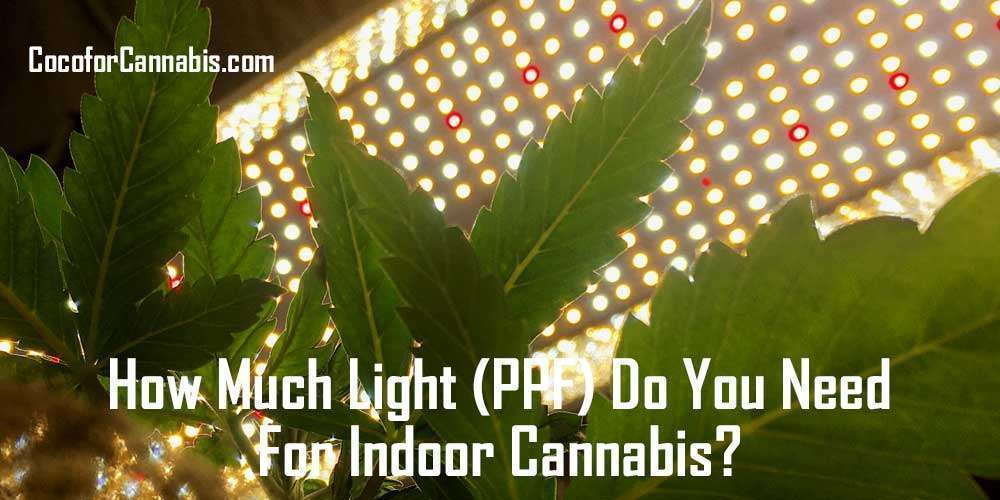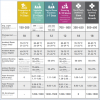OK so I'm at a lose. I thought it was over watering so I lowered the water in my containers so only the roots are in the water not the rock wool. Then a cal/Mag deficiency so I added more. Then I thought phosphorous deficiency, so I added more. These guys are not responding..
You are using an out of date browser. It may not display this or other websites correctly.
You should upgrade or use an alternative browser.
You should upgrade or use an alternative browser.
Plants with multiple symptoms
- Thread starter Hydro_guy
- Start date
Skillcraft
Well-Known Member
In my opinion I think they are overfed. When I run dwc I only reach 1.6 ec when I am in full veg and only reach 1.8 ec when I am in full flower. Can you please elaborate on what lights you are using and temps. Give us as much info as you can about your grow.pH 5.8
EC 1620
PPM 825
Thanks buddy
amneziaHaze
Well-Known Member
look at mine grow diary its the same i think you just have a lot lighter color leaf but rest is the same. its too strong PPM does your ppm raise each day a little? she drinks more than she eats meaning there is too much there.
amneziaHaze
Well-Known Member
Love the room man. the charts are sort of a middle ground what best to try. but each strain has different needs soo you have to learn what each wants to have at each life stage. i had plants that wanted 600 and some that wanted 1200
waterproof808
Well-Known Member
do you mean 1620 PPM's? because 1620 ppms is either 2.3 EC on a 700scale or 3.3EC on the 500scale.EC 1620
HydroKid239
Well-Known Member
I may be a little crazy, but shouldn’t those lights be dimmed at this stage? That’s a lot of light.
do you mean 1620 PPM's? because 1620 ppms is either 2.3 EC on a 700scale or 3.3EC on the 500scale.
It's ppm 825
EC 1.6
I may be a little crazy, but shouldn’t those lights be dimmed at this stage? That’s a lot of light.
Dude your guess is as good as mine lol I've read so many different things about lights. I think my ppfd readings are about 1450 directly under the lights and about 900-1000 on the periphery.
amneziaHaze
Well-Known Member
How Much Light Can Cannabis Plants Use?
It is common to hear that “more light is better” and since many home growers use insufficient lighting for their space, it is often true. However, there is a limit to the density of photons (PPFD) that cannabis plants can use. If plants are exposed to a higher density of photons than they can use in photosynthesis, it will not increase yield. In fact, when PPFD is too high, it can reduce both the yield and the quality of the harvested cannabis.
The rate of photosynthesis and photosynthetic efficiency can be limited by several factors including carbon dioxide, photon density, temperature, oxygen, water, minerals, age, leaf anatomy and more. In many grow tents, photon density is the limiting factor. However, as you increase the density of photons, other factors like carbon dioxide will become the limiting factor. When photosynthesis is limited by any factor other than light, the leaves reach their light saturation point.
Photon density (PPFD) that is beyond the saturation point dictated by photosynthesis can damage plant tissue. Therefore, when leaves reach their saturation point, the plant will attempt to protect itself with photoprotection responses. These include things such as chlorophyll or leaf movement, anatomical changes, non-photochemical quenching and thermal dissipation. All these photoprotection efforts by the plant waste energy and can lower yield.
If the plant cannot adequately protect itself from excessive light energy by using photoprotection responses, it will begin photoinhibition. Photoinhibition decreases the rate of photosynthesis and reduces growth and harvest potential. However, symptoms of light stress do not become apparent if the plant is able to cope with the excessive light. Symptoms such as chlorosis occur only when photoinhibition can no longer effectively protect the plant.
The following are symptoms of cannabis light stress and light burn:
It is common to hear that “more light is better” and since many home growers use insufficient lighting for their space, it is often true. However, there is a limit to the density of photons (PPFD) that cannabis plants can use. If plants are exposed to a higher density of photons than they can use in photosynthesis, it will not increase yield. In fact, when PPFD is too high, it can reduce both the yield and the quality of the harvested cannabis.
The rate of photosynthesis and photosynthetic efficiency can be limited by several factors including carbon dioxide, photon density, temperature, oxygen, water, minerals, age, leaf anatomy and more. In many grow tents, photon density is the limiting factor. However, as you increase the density of photons, other factors like carbon dioxide will become the limiting factor. When photosynthesis is limited by any factor other than light, the leaves reach their light saturation point.
Photon density (PPFD) that is beyond the saturation point dictated by photosynthesis can damage plant tissue. Therefore, when leaves reach their saturation point, the plant will attempt to protect itself with photoprotection responses. These include things such as chlorophyll or leaf movement, anatomical changes, non-photochemical quenching and thermal dissipation. All these photoprotection efforts by the plant waste energy and can lower yield.
If the plant cannot adequately protect itself from excessive light energy by using photoprotection responses, it will begin photoinhibition. Photoinhibition decreases the rate of photosynthesis and reduces growth and harvest potential. However, symptoms of light stress do not become apparent if the plant is able to cope with the excessive light. Symptoms such as chlorosis occur only when photoinhibition can no longer effectively protect the plant.
The following are symptoms of cannabis light stress and light burn:
- Bleaching of buds
- Browning of leaves
- Leaves curling upward (“taco”-ing)
- Discoloration of leaves but veins are still green
- Irregular growth pattern
How Much Light Can Cannabis Plants Use?
It is common to hear that “more light is better” and since many home growers use insufficient lighting for their space, it is often true. However, there is a limit to the density of photons (PPFD) that cannabis plants can use. If plants are exposed to a higher density of photons than they can use in photosynthesis, it will not increase yield. In fact, when PPFD is too high, it can reduce both the yield and the quality of the harvested cannabis.
The rate of photosynthesis and photosynthetic efficiency can be limited by several factors including carbon dioxide, photon density, temperature, oxygen, water, minerals, age, leaf anatomy and more. In many grow tents, photon density is the limiting factor. However, as you increase the density of photons, other factors like carbon dioxide will become the limiting factor. When photosynthesis is limited by any factor other than light, the leaves reach their light saturation point.
Photon density (PPFD) that is beyond the saturation point dictated by photosynthesis can damage plant tissue. Therefore, when leaves reach their saturation point, the plant will attempt to protect itself with photoprotection responses. These include things such as chlorophyll or leaf movement, anatomical changes, non-photochemical quenching and thermal dissipation. All these photoprotection efforts by the plant waste energy and can lower yield.
If the plant cannot adequately protect itself from excessive light energy by using photoprotection responses, it will begin photoinhibition. Photoinhibition decreases the rate of photosynthesis and reduces growth and harvest potential. However, symptoms of light stress do not become apparent if the plant is able to cope with the excessive light. Symptoms such as chlorosis occur only when photoinhibition can no longer effectively protect the plant.
The following are symptoms of cannabis light stress and light burn:
- Bleaching of buds
- Browning of leaves
- Leaves curling upward (“taco”-ing)
- Discoloration of leaves but veins are still green
- Irregular growth pattern
Thanks bro
Thanks this exactly what I need!
OSBuds
Well-Known Member

How Much Light (PPF) Do You Need for Indoor Cannabis? - Coco For Cannabis
The science of photosynthesis, PAR and PPF for indoor cannabis. Our Grow Space Calculator shows the optimal light and harvest estimates for any grow space.
Thanks buddy! I just lowered my lights to about 70-75%...now it's appr. 850 ppfd directly underneath and 540ish on the periphery.
How Much Light (PPF) Do You Need for Indoor Cannabis? - Coco For Cannabis
The science of photosynthesis, PAR and PPF for indoor cannabis. Our Grow Space Calculator shows the optimal light and harvest estimates for any grow space.www.cocoforcannabis.com
Similar threads
- Replies
- 4
- Views
- 849
- Replies
- 16
- Views
- 2K

